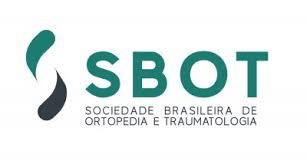Abstract
Objective To perform a comparative clinical, functional and radiographic evaluation of total hip arthroplasty (THA) performed with a cementless prosthesis in cases of osteoarthrosis secondary to Legg-Calvé-Perthes Disease (LCPD) and in cases of primary osteoarthrosis.
Methods In the present case-control study, we reviewed medical records of patients admitted to a university hospital between 2008 and 2015 to undergo THA due to LCPD sequelae and compared them with a control group of patients who underwent the same surgery due to primary hip osteoarthrosis. We recruited patients for clinical, functional, and radiographic analysis and we compared the evaluations in the immediate postoperative period and at the last follow-up visit, considering surgical time, size of prosthetic components, and complications.
Results We compared 22 patients in the study group (25 hips) with 22 patients (25 hips) in the control group, all of whom had undergone THA with the same cementless prosthesis. There was greater functional impairment in the group of patients with LCPD sequelae (p= 0.002). There were 4 intraoperative femoral periprosthetic fractures in the LCPD group and none in the primary osteoarthrosis group (p= 0.050).
Conclusions There is an increased risk of intraoperative periprosthetic femoral fracture and worse clinical-functional results in patients undergoing cementless THA due to osteoarthrosis secondary to LCPD sequelae than in those who have undergone the same surgery due to primary hip osteoarthrosis.
Keywords Legg-Calvé-Perthes disease; osteoarthrosis; arthroplasty, replacement, hip; intraoperative complications

 Cementless Total Hip Arthroplasty in Patients with Osteoarthrosis Secondary to Legg-Calvé-Perthes Disease Compared with Primary Osteoarthrosis: A Case-control Study
Cementless Total Hip Arthroplasty in Patients with Osteoarthrosis Secondary to Legg-Calvé-Perthes Disease Compared with Primary Osteoarthrosis: A Case-control Study Thumbnail
Thumbnail
 Thumbnail
Thumbnail
 Thumbnail
Thumbnail
 Thumbnail
Thumbnail
 Thumbnail
Thumbnail




